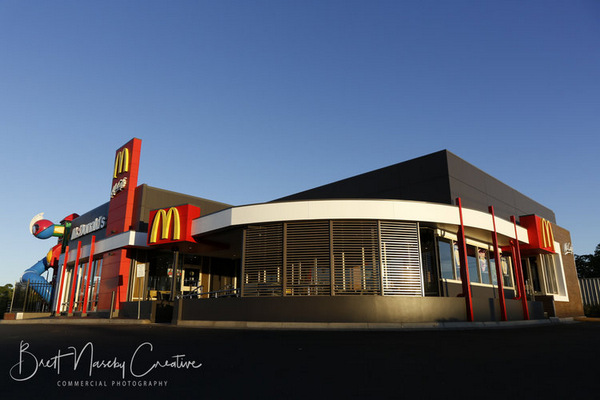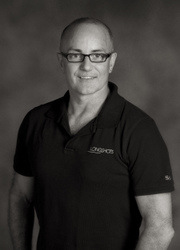When quoting jobs for a prospective client, commercial photographers are finding that working on a day, half-day or hourly rate can see liable to be taken advantage of.
Quoting jobs has to be done carefully in order to ‘stay in business, keep competitive, and place a value on my skills and experience,’ award-winning commercial photographer, William Long, told ProCounter.
Clients have a tendency to enquire about hourly or day rates, or estimate how long a shoot will take in the brief. William said he’s even had a client ask what he charges per quarter of an hour! He responded by joking that, depending on the weather, he’d either charge per 250th of a second or a 60th of a second.
‘Equally suffice to say that a more experienced contractor is going to be quicker than one who is a beginner. Hence why quoting per hour is definitely not a smart business decision,’ William said. ‘I’m happy to explain my time costs (to clients), but state that I produce a fixed quote before every job.
‘The majority of clients who insist on by-the-hour rates normally have no comprehension of what is involved in producing an image. So they’re wildly optimistic in what can be covered in a specific time frame.’
William provides the example that, when contracting a plumber to replace a tap years ago, the labour was quoted at $125 and the job was completed in 10 minutes. He received a cheaper quote from another plumber, but went with the more expensive contractor. It wasn’t a rip-off – the plumber provided a quote based on his value and expertise, and in 15 years the tap hasn’t dripped or caused problems. The same logic applies to photography contractors.
‘I don’t quote per hour, per minute, per shutter speed; I quote on the job and my value. That’s how to stay in business,’ William concluded.
Commercial photographer Lisa Saad, writing for Capture Magazine in 2015, suggests that advertising campaigns shouldn’t be quoted on a day rate, but a Base Usage Rate (BUR), a fixed figure sum to calculate the fees for all licensing, along with the time rate.
Brett Naseby, a commercial photographer from Griffith NSW, recently overhauled his entire business structure. It began with adopting a firmer understanding of each project during the briefing stage, to tailor a more accurate quote for each project.
Brett’s photography career has grown over the last decade from shooting community events as a semi-pro to working as a full-time wedding and portrait photographer. He drifted into real estate photography and has established a career shooting a combination of stills and video for commercial and advertising clients.
As Brett settled into the commercial market, he became increasingly frustrated that some clients were taking advantage of him, but it stemmed from him providing half-day rates.
‘As a freelance creative, when you’re with working an hourly rate, your ideas and skills aren’t what’s valuable. You’re just a machine on the clock,’ Brett told ProCounter. ‘I’d provide a minimum rate for both stills and video usually as a “half-day rate”. Some clients would wring me dry like a cloth. They’d expect you to have the finger on the button non-stop, and really work me into the ground. It could get frantic, and I wasn’t working at a pace that was comfortable. I could end up with thousands of images that I’d have to edit.’
Brett recalls several instances where a client would assume that, since he was on location, he could capture extra photos or footage that wasn’t mentioned in the brief. ‘It won’t take long,’ he’d be told – but the work would mount up and he’d be trapped delivering additional content for free.
By changing how he quotes jobs, Brett hasn’t become ‘more expensive’ – unless he’s given the opportunity to deliver more work. The primary benefit is the client learns that they’re paying for his skills and ideas, along with his time, which results in the content.
Brett had this epiphany after attending a Monica Davidson workshop at Vivid Festival in Sydney.
Monica Davidson, a former freelance writer and film maker, authored the Australian version of Freelancing for Dummies. She’s considered an expert in business management for content creators, and offers business coaching courses.
Pricing and quoting was a topic in the workshop. But the broader theme was how creatives often undervalue the work they create, and aren’t typically natural salespeople, or as business savvy as others.
‘She really inspired me to change the way I operate, and stand up for myself more. Not be aggressive, but much more firm with clients. Sometimes it’s worth just walking away from a job if you suspect it will become a problem. That was a really hard thing for me to do,’ Brett said.
‘When a big business or major client asks you to do a job, it’s exciting and flattering to be part of a project. But when you end up with a mountain of work that wasn’t part of the brief, because you were too caught up in trying to please this great national corporation, it all of a sudden isn’t fun any more. And this extra work is a lost opportunity, to create more value for yourself and end up with more money.

Brett has produced stills and video for a wide range of clients, from Maccas to wineries, the local council and agricultural businesses.
Source: Brett Naseby.
Brett now spends extra time putting together an in-depth project brief, to ensure that when he’s at the shoot the project manager doesn’t throw a curve ball at him by expecting additional shots. If he suspects the curve ball will come his way, he will drop the prospective client.
He shared with ProCounter some recent correspondence with a prospective that he turned down.
An agency rep asked him to capture images for one of their clients. The initial brief was only around four sentences, and it was suggested the job would take just over an hour to capture 50 basic product shots.
Everything remained friendly, but the rep continually mentioned the ‘time rate’, despite Brett avoiding the term. The deal was almost finalised, until the rep asked Brett to capture extra ‘creative shots’ of the building interior and action shots of staff for free – since he was on a ‘half day rate’. And then he was asked to do it all before Christmas.
Brett explained the quote wasn’t based on a time frame, and additional photos would come at a fee. The shoot wasn’t feasible within such a short time frame and Brett suggested the rep contact another local photographer.
It’s all in the brief
Brett said it’s almost impossible to correctly quote a specific job without an in-depth brief. He routinely asks for:
– Volume of images or length of video;
– Licensing agreements, and how the photos or videos will be used and for how long;
– Description of the images, along with examples of what style they like;
– The expenses of the shoot;
– Will there be models or other individuals involved;
– The time it will take, from pre-production to delivering the project
– The client’s expectations, budget, size of the business;
– The locations of the shoot.
It’s important to make it clear that if any details change, it may affect the final fee charged.




This is a really important article for any newbies, well done critical information there!